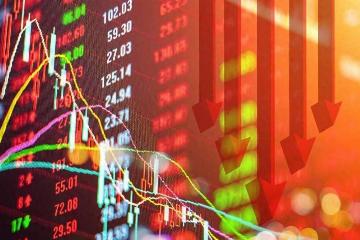$200 Billion in Gains: Public Funds Remain Wary of TMT
Advertisements
As the calendar turned from 2022 to 2023, the financial landscape in China witnessed a significant shift in investment patterns among public funds and northbound capitalThis transition has been notable in the Technology, Media, and Telecommunications (TMT) sector, where differing strategies exhibit a tale of caution and optimismDespite a decrease in holdings at the end of 2022, public funds have revealed a cautious demeanor when it comes to positioning in TMT stocks, while northbound investments have taken a more aggressive stance, hinting at increasing market confidence.
In particular, the TMT index saw a remarkable surge, recording a 33.79% increase in value by April 11, 2023. In stark contrast, prior to this spike, public funds had notably decreased their holdings in the TMT sector, marking a pivotal moment amidst rising stock prices
Advertisements
Fund managers may have underestimated the potential for recovery within this segment, leading to a trend of selling before witnessing the sector's resurgenceThe divergence in investment strategies raises questions about market sentiment and the ability to foresee emerging opportunities.
As of the end of 2022, the market capitalization of stocks within the TMT index held by public funds totaled approximately 652 billion yuan, a steep decline of 33.31% compared to the previous yearThe ownership rate—a measure indicating the proportion of public fund assets against the total market value of the index—also fell from 15.34% to 13.47%. This decline underscores the cautious retreat by fund managers from a sector previously viewed as a high-growth avenue.
Looking more closely at the specific sectors making up the TMT index, which includes electronics, computer science, telecommunications, and media, public funds also showcased a diminishing interest
Advertisements
By the end of 2022, the collective market value of their holdings in these sectors had decreased, totaling around 914 billion yuan—marking a 27.24% drop year-on-yearAlthough there were fluctuations within specific industries, the overall holding percentage decreased, reflecting a significant risk-averse mentality among fund managers.
Despite these reductions in public fund holdings, significant gains were made in the first quarter of 2023. Interestingly, the returns associated with the TMT sector investments painted a different story: public funds realized substantial floating profits, estimated at around 221.7 billion yuan across the four major sectors as the stocks surged—regardless of their previous selling behaviorThis suggested a missed opportunity for investors who exited too soon, unable to capitalize on the subsequent bullish trend.
Meanwhile, northbound capital—which refers to investments from Hong Kong into mainland China—exhibited a notable turnaround
Advertisements
By the end of the first quarter of 2023, these investments had risen sharply, increasing the total stock values of TMT index holdings by 37.45%. This uptick brought the ownership ratio to 4.48%, showing investors' renewed interest in the TMT sector amid a recovering market.
Furthermore, when examining the thematic exchange-traded funds (ETFs) that focus on TMT sectors, data indicated a decline of about 23.28 million units in the first quarter of 2023. This could reflect a broader trend away from passive investment strategies in favor of actively managed portfolios, as investors sought to capitalize on volatile market conditions triggered by shifting technological landscapes.
The index's components, which include key players such as Cambricon Technologies, 360 Security Technology, and others, have witnessed tumultuous performances
- Volatility of the S&P 500 Index
- Analysis of A-Shares Market and Key Sector Focus
- The Reality Behind Failed Fed Rate Cut Expectations
- Fund Flows from U.S. Propel European Stocks to Highs
- Analyzing Western Investment in Hong Kong
For instance, while the leading stocks showed gains exceeding 240% in some cases, notable outliers struggled—in this instance, some stocks plummeted by more than 20%. The discrepancies in performance across the board only add to the complexities of navigating this investment terrain.
In a historical context, public funds have displayed a pattern of withdrawing from the TMT sector over the past two years, showcasing a marked decrease in holdingsConversely, northbound capital has steadily increased its stake in these assets over the same period, indicating contrasting investment strategies and philosophies that have emerged between the two types of investors.
Public funds’ compressed holdings ratio—with the electronics sector dropping by 1.92% and media by 2.15%—contrasts starkly with the northbound capital, which maintains lower but growing investment ratios in the same sectors

The ongoing macroeconomic conditions, coupled with increased investor scrutiny, will likely dictate the future of these sectors amidst a recovering marketFor instance, the public funds have regained some ground in the communications sector while showing hesitance towards electronics and media.
As investors navigate a post-pandemic financial landscape, particularly in high-volatility sectors, the need for adaptive strategies will be more critical than everThe performances of individual stocks may guide broader investment principles, requiring both public fund managers and northbound investors to reassess risk appetite and growth potential.
In conclusion, the evolving investment dynamics between public funds and northbound capital in the TMT sector showcase a significant narrative of caution versus optimism
Leave A Comment